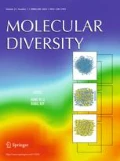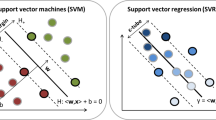Abstract
By hybridizing the functional-domain and sequence-correlated pseudo amino acid composition approaches, a 2-layer predictor called “Quat-2L” was developed for predicting the quaternary structural attribute of a protein according to its sequence information alone. The 1st layer is to identify the query protein as monomer, homo-oligomer, or hetero-oligomer. If the result thus obtained turns out to be homo-oligomer or hetero-oligomer, then the prediction will be automatically continued to further identify it belonging to one of the following six subtypes: (1) dimer, (2) trimer, (3) tetramer, (4) pentamer, (5) hexamer, and (6) octamer. The overall success rate of Quat-2L for the 1st layer identification was 71.14%; while the overall success rates of the 2nd layer for homo-oligomers and hetero-oligomers were 76.91 and 82.52%, respectively. These rates were derived by the jackknife cross-validation tests on the stringent benchmark data set in which none of proteins has ≥60% pairwise sequence identity to any other in the same subset. As a web-server, Quat-2L is freely accessible to the public via http://icpr.jci.jx.cn/bioinfo/Quat-2L, where one can get 2-level results in about 15 s.
Similar content being viewed by others
References
Voet D, Voet JG (1995) Biochemistry, 2. Wiley, New York, pp 180–185
Xiao X, Wang P, Chou KC (2009) Predicting protein quaternary structural attribute by hybridizing functional domain composition and pseudo amino acid composition. J Appl Crystallogr 42: 169–173. doi:10.1107/S0021889809002751
Schnell JR, Chou JJ (2008) Structure and mechanism of the M2 proton channel of influenza A virus. Nat 451: 591–595. doi:10.1038/nature06531
Chou KC (1988) Review: Low-frequency collective motion in biomacromolecules and its biological functions. Biophys Chem 30: 3–48. doi:10.1016/0301-4622(88)85002-6
Garian R (2001) Prediction of quaternary structure from primary structure. Bioinformatics 17: 551–556. doi:10.1093/bioinformatics/17.6.551
Chou KC, Cai YD (2003) Predicting protein quaternary structure by pseudo amino acid composition. Proteins: Struct Funct Genet 53: 282–289. doi:10.1002/prot.10500
Zhang SW, Pan Q, Zhang HC, Zhang YL, Wang HY (2003) Classification of protein quaternary structure with support vector machine. Bioinformatics 19: 2390–2396. doi:10.1093/bioinformatics/btg331
Zhang SW, Pan Q, Zhang HC, Shao ZC, Shi JY (2006) Prediction protein homo-oligomer types by pseudo amino acid composition: Approached with an improved feature extraction and naive Bayes feature fusion. Amino Acids 30: 461–468. doi:10.1007/s00726-006-0263-8
Zhang SW, Chen W, Yang F, Pan Q (2008) Using Chou’s pseudo amino acid composition to predict protein quaternary structure: a sequence-segmented PseAAC approach. Amino Acids 35: 591–598. doi:10.1007/s00726-008-0086-x
Carugo O (2007) A structural proteomics filter: prediction of the quaternary structural type of hetero-oligomeric proteins on the basis of their sequences. Appl Crystallogr 40: 986–989. doi:10.1107/S0021889807041076
Chou KC, Cai YD (2002) Using functional domain composition and support vector machines for prediction of protein subcellular location. J Biol Chem 277: 45765–45769. doi:10.1074/jbc.M204161200
Chou KC (2001) Prediction of protein cellular attributes using pseudo amino acid composition. Proteins: Struct Funct Genet (Erratum: ibid, 2001, vol 44, 60) 43: 246–255. doi:10.1002/prot.1035
Chou KC (2009) Pseudo amino acid composition and its applications in bioinformatics, proteomics and system biology. Curr Proteom 6: 262–274. doi:10.2174/157016409789973707
Chou KC, Shen HB (2009) Review: recent advances in developing web-servers for predicting protein attributes. Nat Sci 2:63–92. http://www.scirp.org/journal/NS/. doi:10.4236/ns.2009.12011
Li W, Godzik A (2006) Cd-hit: a fast program for clustering and comparing large sets of protein or nucleotide sequences. Bioinformatics 22: 1658–1659. doi:10.1093/bioinformatics/btl158
Chou KC, Shen HB (2007) Review: recent progresses in protein subcellular location prediction. Anal Biochem 370: 1–16. doi:10.1016/j.ab.2007.07.006
Altschul SF, Madden TL, Schaffer AA, Zhang J, Zhang Z, Miller W et al (1997) Gapped BLAST and PSI-BLAST: a new generation of protein database search programs. Nucleic Acids Res 25: 3389–3402. doi:gka562 [pii]
Chou KC (1995) A novel approach to predicting protein structural classes in a (20-1)-D amino acid composition space. Proteins: Struct Funct Genet 21: 319–344. doi:10.1002/prot.340210406
Tatusov RL, Fedorova ND, Jackson JD, Jacobs AR, Kiryutin B, Koonin EV et al (2003) The COG database: an updated version includes eukaryotes. BMC Bioinform 4: 41. doi:10.1186/1471-2105-4-41
Finn RD, Mistry J, Schuster-Bockler B, Griffiths-Jones S, Hollich V, Lassmann T et al (2006) Pfam: clans, web tools and services. Nucleic Acids Res 34: D247–D251. doi:10.1093/nar/gkj149
Letunic I, Copley RR, Pils B, Pinkert S, Schultz J, Bork P (2006) SMART 5: domains in the context of genomes and networks. Nucleic Acids Res 34: D257–D260. doi:10.1093/nar/gkj079
Marchler-Bauer A, Anderson JB, Derbyshire MK, DeWeese-Scott C, Gonzales NR, Gwadz M et al (2007) CDD: a conserved domain database for interactive domain family analysis. Nucleic Acids Res 35: D237–D240. doi:10.1093/nar/gkl951
Chou KC, Shen HB (2008) ProtIdent: a web server for identifying proteases and their types by fusing functional domain and sequential evolution information. Biochem Biophys Res Commun 376: 321–325. doi:10.1016/j.bbrc.2008.08.125
Chou KC (2005) Using amphiphilic pseudo amino acid composition to predict enzyme subfamily classes. Bioinformatics 21: 10–19. doi:10.1093/bioinformatics/bth466
Chen C, Chen L, Zou X, Cai P (2009) Prediction of protein secondary structure content by using the concept of Chou’s pseudo amino acid composition and support vector machine. Protein Pept Lett 16: 27–31. doi:10.1016/j.jtbi.2006.06.025
Ding YS, Zhang TL (2008) Using Chou’s pseudo amino acid composition to predict subcellular localization of apoptosis proteins: an approach with immune genetic algorithm-based ensemble classifier. Pattern Recognit Lett 29: 1887–1892. doi:10.1016/j.patrec.2008.06.007
Ding H, Luo L, Lin H (2009) Prediction of cell wall lytic enzymes using Chou’s amphiphilic pseudo amino acid composition. Protein Pept Lett 16: 351–355. doi:10.2174/092986609787848045
Georgiou DN, Karakasidis TE, Nieto JJ, Torres A (2009) Use of fuzzy clustering technique and matrices to classify amino acids and its impact to Chou’s pseudo amino acid composition. J Theor Biol 257: 17–26. doi:10.1016/j.jtbi.2008.11.003
Jiang X, Wei R, Zhang TL, Gu Q (2008) Using the concept of Chou’s pseudo amino acid composition to predict apoptosis proteins subcellular location: an approach by approximate entropy. Protein Pept Lett 15: 392–396. doi:10.2174/092986608784246443
Li FM, Li QZ (2008) Predicting protein subcellular location using Chou’s pseudo amino acid composition and improved hybrid approach. Protein Pept Lett 15: 612–616. doi:10.2174/092986608784966930
Lin H (2008) The modified Mahalanobis discriminant for predicting outer membrane proteins by using Chou’s pseudo amino acid composition. J Theor Biol 252: 350–356. doi:10.1016/j.jtbi.2008.02.004
Lin H, Ding H, Feng-Biao Guo FB, Zhang AY, Huang J (2008) Predicting subcellular localization of mycobacterial proteins by using Chou’s pseudo amino acid composition. Protein Pept Lett 15: 739–744
Lin H, Wang H, Ding H, Chen YL, Li QZ (2009) Prediction of subcellular localization of apoptosis protein using Chou’s pseudo amino acid composition. Acta Biotheor 57: 321–330. doi:10.1007/s10441-008-9067-4
Qiu JD, Huang JH, Liang RP, Lu XQ (2009) Prediction of G-protein-coupled receptor classes based on the concept of Chou’s pseudo amino acid composition: an approach from discrete wavelet transform. Anal Biochem 390: 68–73. doi:10.1016/j.ab.2009.04.009
Zeng YH, Guo YZ, Xiao RQ, Yang L, Yu LZ, Li ML (2009) Using the augmented Chou’s pseudo amino acid composition for predicting protein submitochondria locations based on auto covariance approach. J Theor Biol 259: 366–372. doi:10.1016/j.jtbi.2009.03.028
Zhang GY, Fang BS (2008) Predicting the cofactors of oxidoreductases based on amino acid composition distribution and Chou’s amphiphilic pseudo amino acid composition. J Theor Biol 253: 310–315. doi:10.1016/j.jtbi.2008.03.015
Zhang GY, Li HC, Fang BS (2008) Predicting lipase types by improved Chou’s pseudo-amino acid composition. Protein Pept Lett 15: 1132–1137. doi:10.2174/092986608786071184
Zhou XB, Chen C, Li ZC, Zou XY (2007) Using Chou’s amphiphilic pseudo-amino acid composition and support vector machine for prediction of enzyme subfamily classes. J Theor Biol 248: 546–551. doi:10.1016/j.jtbi.2007.06.001
Chou KC, Zhang CT (1994) Predicting protein folding types by distance functions that make allowances for amino acid interactions. J Biol Chem 269: 22014–22020
Xiao X, Shao S, Ding Y, Huang Z, Huang Y, Chou KC (2005) Using complexity measure factor to predict protein subcellular location. Amino Acids 28: 57–61. doi:10.1007/s00726-004-0148-7
Xiao X, Shao SH, Huang ZD, Chou KC (2006) Using pseudo amino acid composition to predict protein structural classes: approached with complexity measure factor. J Comput Chem 27: 478–482. doi:10.1002/jcc.20354
Wolfram S (1984) Cellular automation as models of complexity. Nature 311: 419–424
Cover TM, Hart PE (1967) Nearest neighbour pattern classification. IEEE Trans Inform Theory (IT) 13: 21–27
Chou KC, Shen HB (2006) Hum-PLoc: A novel ensemble classifier for predicting human protein subcellular localization. Biochem Biophys Res Commun 347: 150–157. doi:10.1016/j.bbrc.2006.06.059
Chou KC, Shen HB (2007) Large-scale plant protein subcellular location prediction. J Cell Biochem 100: 665–678. doi:10.1002/jcb.21096
Chou KC, Shen HB (2007) Euk-mPLoc: a fusion classifier for large-scale eukaryotic protein subcellular location prediction by incorporating multiple sites. J Proteom Res 6: 1728–1734. doi:10.1021/pr060635i
Chou KC, Shen HB (2007) MemType-2L: a Web server for predicting membrane proteins and their types by incorporating evolution information through Pse-PSSM. Biochem Biophys Res Commun 360: 339–345. doi:10.1021/pr060635i
Keller JM, Gray MR, Givens JA (1985) A fuzzy k-nearest neighbours algorithm. IEEE Trans Syst Man Cybern 15: 580–585
Mardia KV, Kent JT, Bibby JM (1979) Multivariate analysis: chapter 11 discriminant analysis; chapter 12 multivariate analysis of variance; chapter 13 cluster analysis. Academic Press, London, pp 322–381
Mahalanobis PC (1936) On the generalized distance in statistics. Proc Natl Inst Sci India 2: 49–55
Zhou GP (1998) An intriguing controversy over protein structural class prediction. J Protein Chem 17: 729–738. doi:10.1023/A:1020713915365
Zhou GP, Assa-Munt N (2001) Some insights into protein structural class prediction. Proteins: Struct Funct Genet 44: 57–59. doi:10.1002/prot.1071
Zhou GP, Doctor K (2003) Subcellular location prediction of apoptosis proteins. Proteins: Struct Funct Genet 50: 44–48. doi:10.1002/prot.10251
Wang T, Yang J, Shen HB, Chou KC (2008) Predicting membrane protein types by the LLDA algorithm. Protein Pept Lett 15: 915–921. doi:10.2174/092986608785849308
Chen K, Kurgan M, Kurgan L (2008) Sequence based prediction of relative solvent accessibility using two-stage support vector regression with confidence values. J Biomed Sci Eng (JBiSE) 1: 1–9. http://www.srpublishing.org/journal/jbise/. doi:10.4236/jbise.2008.11001
Shen HB, Song JN, Chou KC (2009) Prediction of protein folding rates from primary sequence by fusing multiple sequential features. J Biomed Sci Eng (JBiSE) 2:136–143. http://www.srpublishing.org/journal/jbise/. doi:10.4236/jbise.2009.23024
Chou KC, Shen HB (2009) FoldRate: a web-server for predicting protein folding rates from primary sequence. Open Bioinform J 3:31–50. http://www.bentham.org/open/tobioij/
Du P, Cao S, Li Y (2009) SubChlo: predicting protein subchloroplast locations with pseudo-amino acid composition and the evidence-theoretic K-nearest neighbor (ET-KNN) algorithm. J Theor Biol 261: 330–335. doi:10.1016/j.jtbi.2009.08.004
Vilar S, Gonzalez-Diaz H, Santana L, Uriarte E (2009) A network-QSAR model for prediction of genetic-component biomarkers in human colorectal cancer. J Theor Biol 261: 449–458. doi:10.1016/j.jtbi.2009.07.031
Author information
Authors and Affiliations
Corresponding author
Electronic Supplementary Material
Rights and permissions
About this article
Cite this article
Xiao, X., Wang, P. & Chou, KC. Quat-2L: a web-server for predicting protein quaternary structural attributes. Mol Divers 15, 149–155 (2011). https://doi.org/10.1007/s11030-010-9227-8
Received:
Accepted:
Published:
Issue Date:
DOI: https://doi.org/10.1007/s11030-010-9227-8




